My cycle tour of Germany’s version of the Pyramids
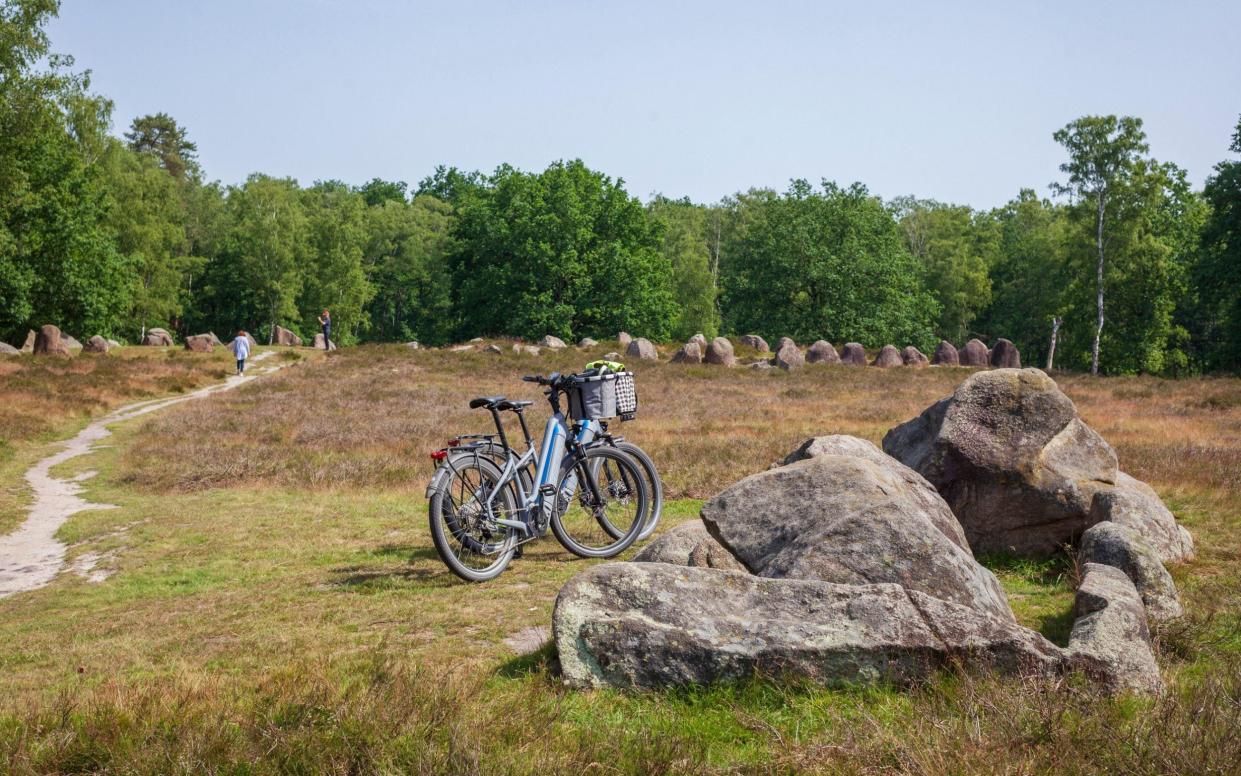
“Filthy Menhirs. I curse them. I curse all stones. I curse the ice that brought them here.” Twenty kilometres into a bicycle trip through the blossomy lowlands of North East Germany, my 10-year-old daughter had had enough.
We were on the “Radroute der Megalithkultur” – a week-long cycle path among the Neolithic tombs scattered between the medieval cities of Osnabruck and Oldenburg. For 380km, the Radroute zig-zags through dappled woods and hidden pristine villages, along sparkling rivers, past placid swimming lakes and ancient heathland. An old-fashioned, non-polluting, child-friendly family holiday; a perfect combination of cardiovascular exercise and cultural education; but it does go past an awful lot of stones.
Thousands of megaliths (literally, big stones) were once dotted around the countryside of Northern Germany. They were brought here 330,000 to 130,000 years ago and floated down here (in what is now mid-air) by glaciers from Sweden. For a brief period of 700 years (3500-2800 BC), the Funnelbeaker people (so named because of the funnel-shaped ceramics they made) built them into tombs, like rustic versions of Egypt’s Pyramids.
Nobody knows why, or for whom or exactly how they did it. The results, where they’re still complete, look like card tables for short-legged giants: a capstone resting on side stones. They should almost be covered in baize. Despite using the most up-to-date lifting equipment, modern builders have sometimes not been able to return the gargantuan boulders to their original positions.
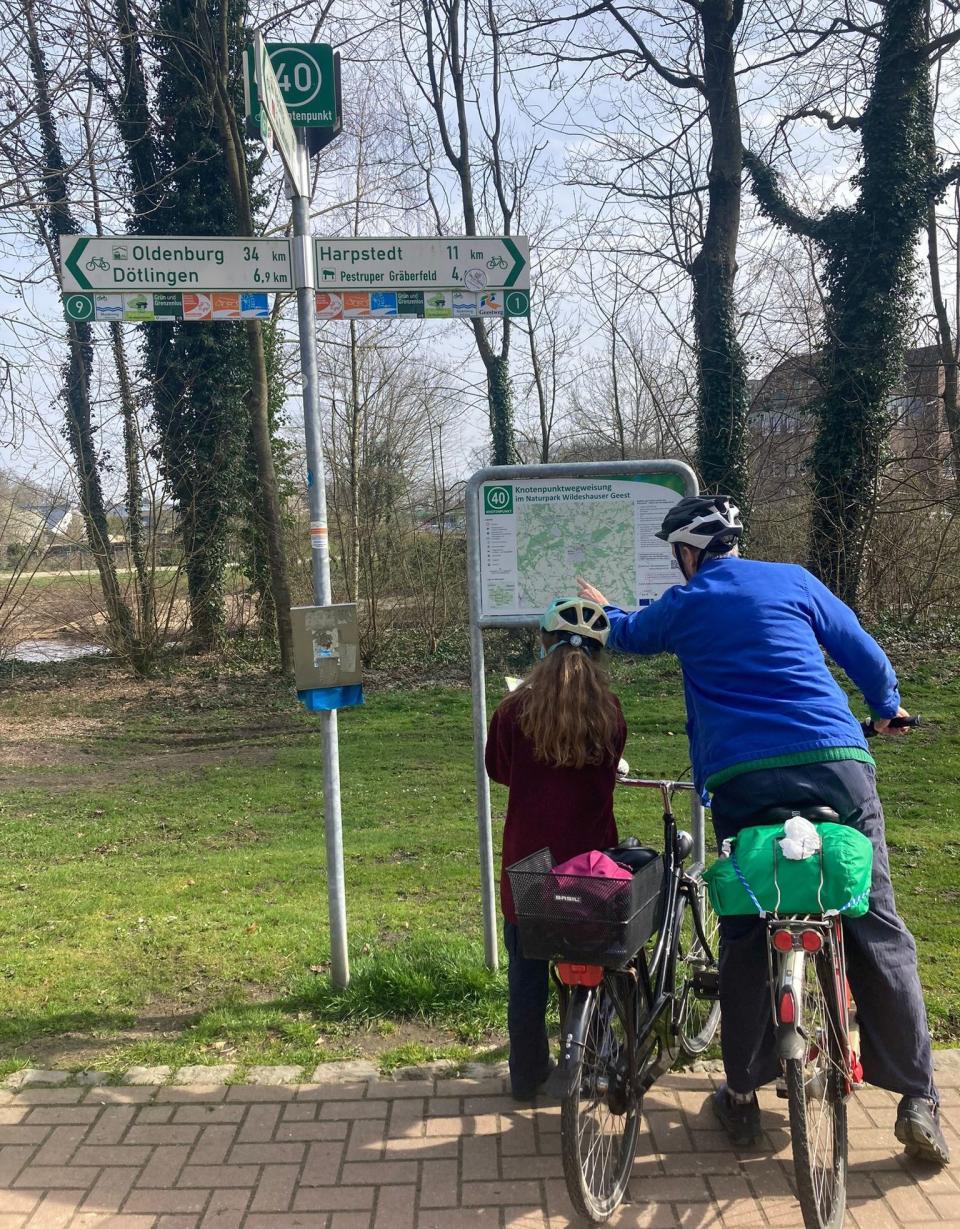
Now only a hundred or so of the graves are left. Most sites have been blown apart and plundered by farmers or (occasionally) vicars wanting building materials for their barns and churches. The beautiful, broad farmhouses of this part of Lower Saxony often have piles of menhir-shaped rocks at the edge of their courtyards.
One of the most startling is from the Kleinenkneter group (“Klein” means “small” in German): as long as an Olympic swimming pool. The main capstone weighs 42 tonnes.
“That’s over eight elephants,” my daughter whispered in awe, while we cowered in the cramped burial chamber beneath.
Who was the bright spark who first suggested putting elephant-sized lumps of granite on top of each other? Why did everyone else agree to it? Were they vanity projects, directed by neolithic Donald Trumps? Megaliths appear all over the world: piling up boulders is a common human urge. The massiveness of the stone, the impossibility of the task, the improbability of the conclusion: these strange buildings represent the furthest reach of human endurance and will; the point at which the divine takes over.
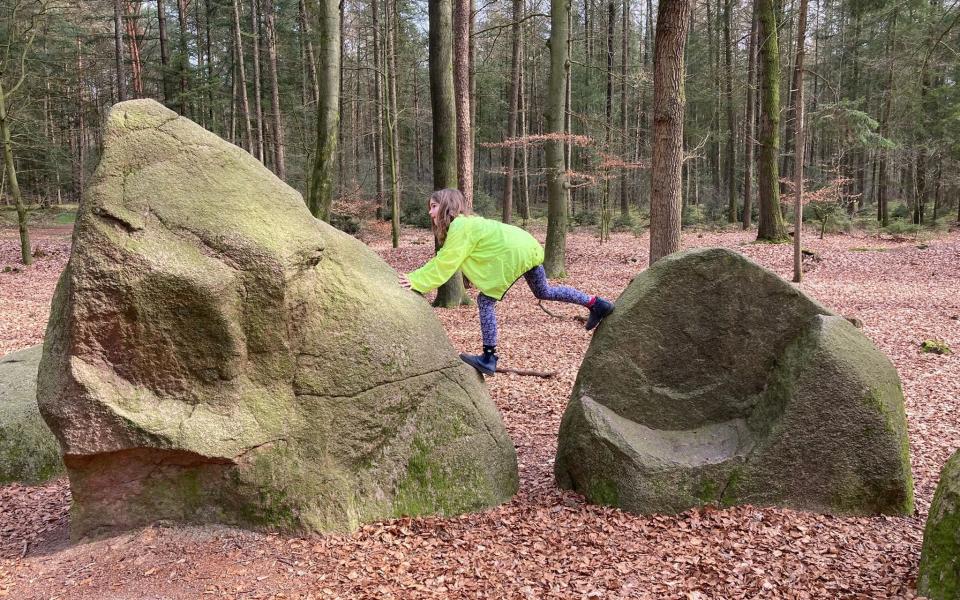
“And then there’s the question of the ice,” I called across my handlebars to my daughter. “What we are seeing here is the future as well as the past. Unless we stop driving gas-guzzling SUVs and taking unnecessary plane journeys, the Arctic will also have stones like these dropping out of the meltwater.”
“Please!” cried my daughter. “Not a thoughtful discussion about climate change as well!” and she raced ahead, whooping, to grave 28b.
The best way to do the “Radroute der Megalithkultur” is not to. Don’t try to do all 380km, and instead take advantage of the fact that these tombs appear in clusters. Find a base and venture out for day trips, alternating burial mounds with swimming in lakes or dozing in woodlands and playing tag on the heath. We were in the northern cluster, so chose the excellent Gut Moorbeck, a countryside spa B&B.
It is near to Dötlingen, considered by many to be the most beautiful village in Germany. An hour after arriving at Gut Moorbeck, following a swim, a sauna and a vicious go in the massage chair, happiness was restored. For €190 a night, four people can have a three-roomed apartment with a galley kitchen and a view overlooking a millpond, which has a beaver in it called Justin.
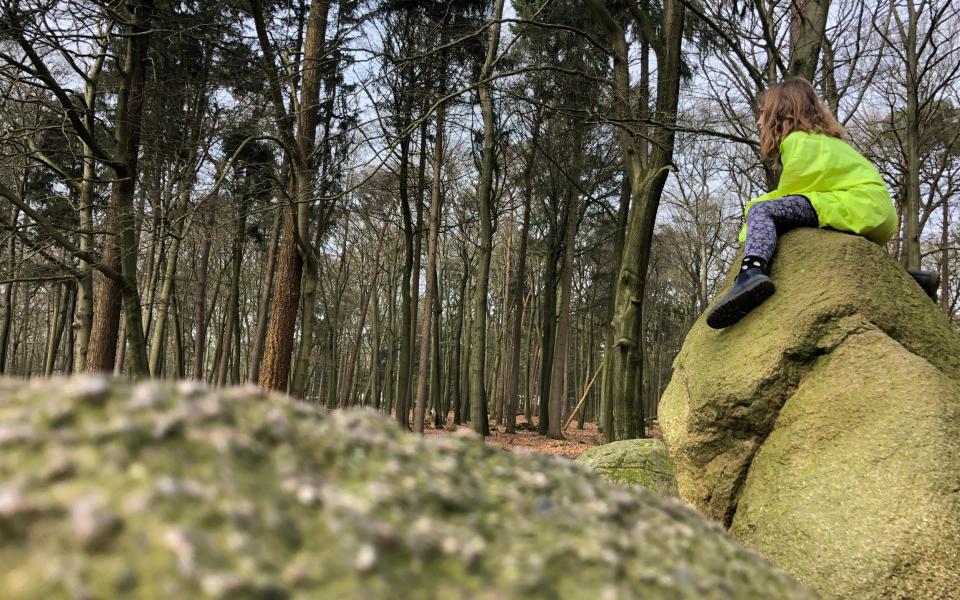
At breakfast the next morning (€15 per person; served on a cake stand; enough to feed six) we immediately began to fill the rolls whenever the waitress left the room. The waitress smiled. She knew what we were up to. It was our breakfast: if we wanted to stuff our delicious, oily smoked trout and mackerel into bread rolls in weird combinations with German cheese and salami, covered in decomposing paper napkins and eat them stale on top of tombstones after three hours of cycling, that was our business.
One tomb we saw was unexcavated. It lay on the edge of a sun-speckled wood. Blackthorn marked the way in explosions of white. Deer bounded among the trees. These small, less visited graves (there are several of them dotted along the route) have an exciting feeling of intimacy and confidence.
Here, a metre under your feet, on the edge of the quiet wood, there may still be an amber necklace, axe heads, shards of pottery: the remains of a people who worshipped the unknown. A microlight puttered overhead; we craned our heads to look: 10,000 years ago, that was the height of the ice: half a kilometre high. Enormous wind turbines are everywhere here; during that ice age, you’d have had to climb six of them, one after the other, to reach open air.
At the museums in Oldenburg and Meppe, you can see what burial treasures have been gathered by archaeologists and farmers. The rough construction of the pottery is thrilling; the mysterious markings are something you might have done yourself. It feels psychologically closer to an enticing Greek amphora or a smooth Roman statuette. If you could reach through the cabinet glass, you might touch the hand that formed these coarse, elegant objects out of riverbank clay and a bonfire oven.
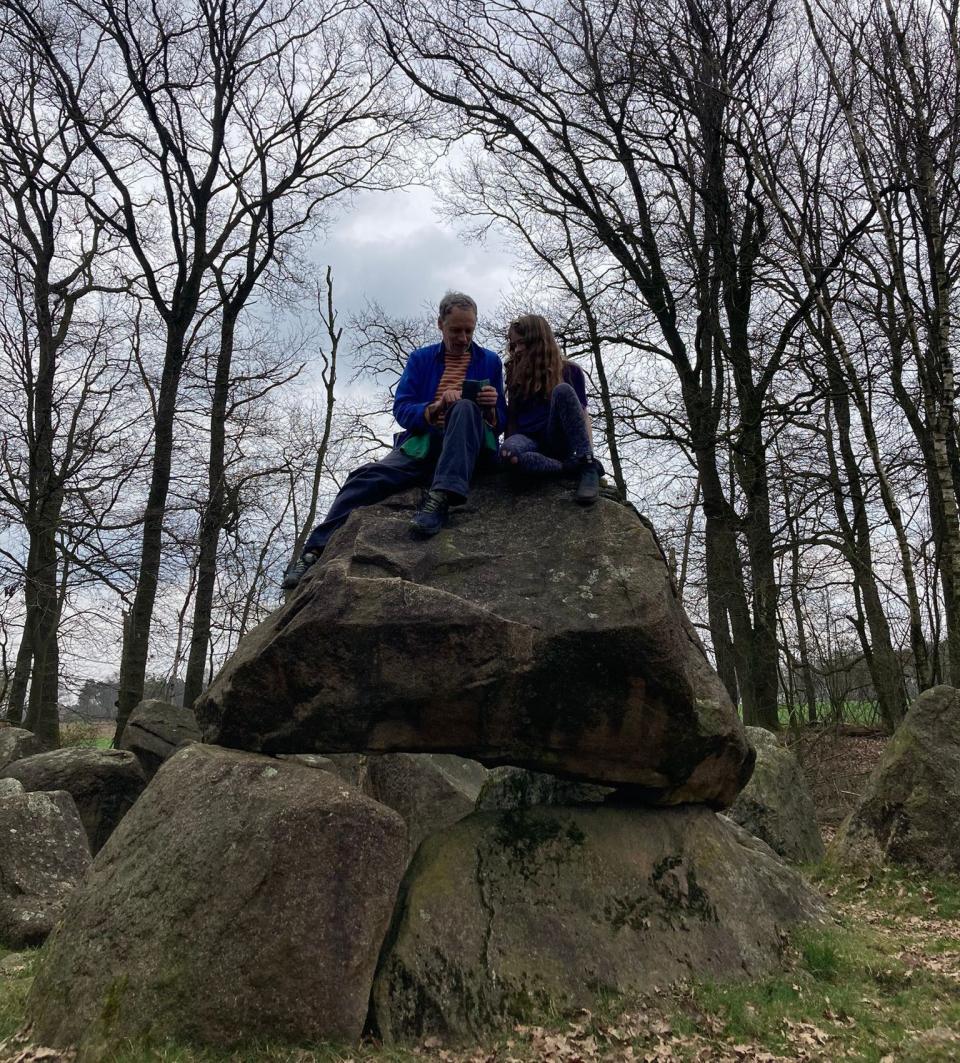
I have only two complaints about the Radroute der Megalithinkulur: first, it’s impossible to get lost. We tried. We took wrong turnings, went out along entrance paths and entered along exits, set off north when the guide unmistakably said, “Go south”. None of it worked. Even in the middle of deserted woodland, with no other person seen for two hours, cheerful signs showing a green bicycle popped out from behind trees to guide us back to the Radroute der Megalithkultur.
The exception is when you leave one cluster of stones to get to another. At this point, the designers of the Radroute fell asleep. After the tomb of the Groom of Visbek, a bridge over a motorway is followed by a terrifying stretch of plain road with the occasional lorry veering left to avoid you. Don’t do it. Take a short road north to Ahlhorn, or south to Visbek, and catch the train to Cloppenburg instead. And remember to buy an ordinary ticket in addition to a Fahrrad ticket, otherwise, like my partner, you will spend the entire journey trying to convince the ticket inspector that you’re a bicycle.
An impressively fit person can cycle 100km a day. A family with a 10-year-old should aim for 25km, expect rebellions at 30km and be happy with 20km. Pack plenty of water alongside your breakfast banditry, remember that more than four graves a day is adult entertainment, and on no account begin instructive reflections about the marvels of history after the 15th kilometre: follow these three, simple instructions and you will have a delightful time
“I’ve stopped cursing those bits of ice and now I’m blessing them,” said my daughter as we munched the last of our stale, squashed Gut Moorbeck sandwiches. Then she paused and added, “… slightly”.
Essentials
Alexander was a guest at Gut Moorbeck (0049 4433255; gut-moorbeck.de/) where family B&B rooms cost 190€ (£165) per night (minimum two-night stay) and single rooms 115€ (£100) per night, no minimum stay.
A map and further information for the Megaliythic Culture Bike Route can be found at all tourist information offices along the way. Bikes and e-bikes can be rented from numerous locations along the route.


